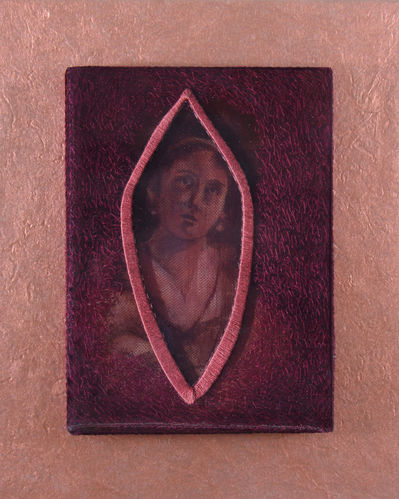I Always Thought I Could Be Someone (2010)
Various concepts motivated Caroline Rust to create these pieces; the idea of women being seen as an object (preferably easy to look at) with her identity tucked away inside, her affinity towards the female artist kinship, the use of visible stitching symbolizing visible feeling or emotion which is lying right under the top layer of the woman, the concept that women are the makers of comfort and of comfortable life patterns, and the concept that one must find a pattern in one’s life to create balance and to “make things work”.
Layered with symbolism, these three pieces are lovely, pristine objects. Each piece is constructed of layers of embroidery stretched over painted images of three historically notable female artists; Artemisia Gentileschi (Italian born 1593), Camille Claudel (French born 1864), and Emily Carr (Canadian born 1871). Both layers of stitching are on toile. What is different about stitching on this fabric is that the front of the stitches and the back of the stitches are both visible, leaving no room to hide anything. Thus, limiting the type of stitching that can be executed seeing as the underneath and the surface are both in sight. Symbolically while Rust was working, there was a constant reminder that she had to get back to the border’s edge each time she trailed off toward the center and that she had to be able to get back to the edge prior to the thread running out. The under-stitching suggests passionate energy underneath the more reserved female surface. In terms color, the inside layer (though a little difficult to distinguish in the final pieces), are more warm in temperature and the outside layers more cool.








